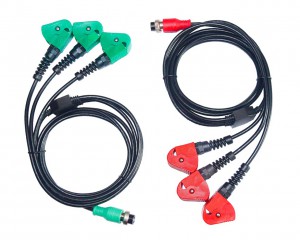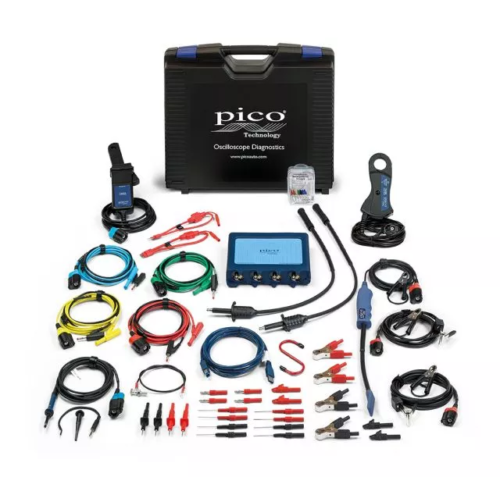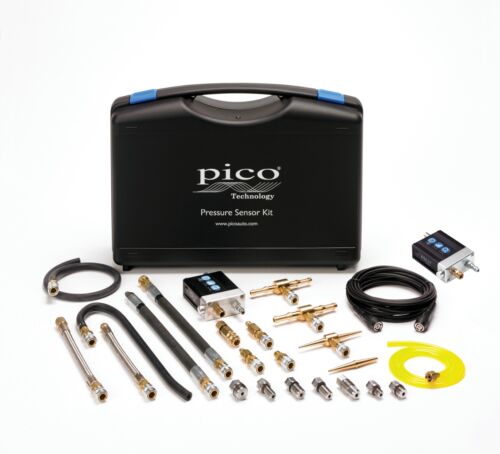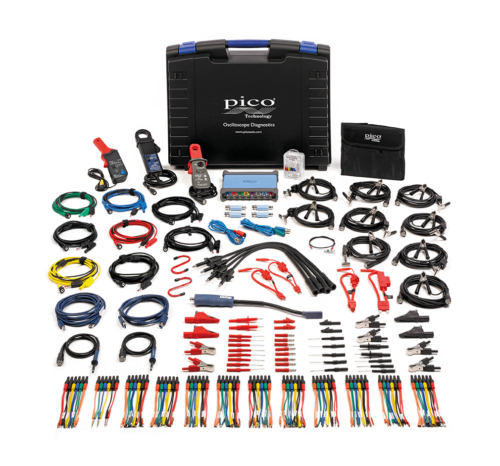USB Autoscope IV is the most advanced oscilloscope/engine analyzer from our series of 8-channel analyzers.
The scope gets its power from the USB port. Some of the probes, such as the transducers, need external power and they will receive that from the vehicle battery. For this, USB Autoscope IV uses custom 3 pin connectors to provide power to the end of the test lead to power various accessories.
The test lead probes work without an external supply, but if you connect the oscilloscope to battery power, the Led in the probes will light up. That is a very nice feature when you try to back probe something or another and the light is not in your favor.
To power accessories the scope needs to have the 4 pin power supply cable hooked up to a power source, such as the vehicle’s battery. Ignition system testing capabilities are built in to the scope.
The different inputs of the USB Autoscope IV are designed for different input voltages. The first 4 connectors located on the front panel of the device are analog inputs №1…4. They have 2 input voltage ranges: ±6 V and ±30 V. The ±6V input is designed to measure the signal from the transducers supplied with the device; the ±30V input is designed to measure signals of low-voltage automotive sensors, as well as for measuring voltages in the vehicle’s power circuits.
The 5th and 6th connectors are analog inputs №5 and №6. Other input voltage ranges are provided for them: ±60 V and ±300 V. These inputs are designed to measure signals from inductive rotational speed sensors, such as a crankshaft, camshaft, vehicle speed sensor, shaft speed sensors in a gearbox, wheel speed sensors, a diesel fuel pump shaft, a turbocharger, as well as for measuring signals from other sensors that generate an increased voltage. Also, these inputs are designed to measure voltage waveform of control signals for ignition coils, fuel injectors, and other electronically controlled actuators.
Connectors 7, 8 and 9 on the front panel of the device are designed to connect capacitive and inductive high-voltage probes for testing ignition systems.
We present the measurement possibilities with the device HERE and reading the analysis of the recorded graphs HERE




























